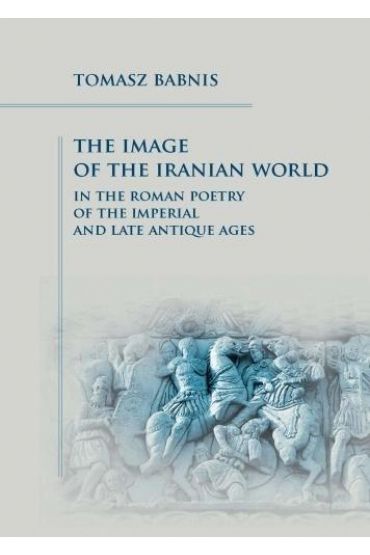74.49 zł

The Image of the Iranian World in the Roman Poetry
Tomasz Babnis
110.00 zł
Książkę najtaniej kupisz w księgarni TANTIS.PL
| TANTIS.PL | 74.49 zł | do sklepu |
| Możliwy odbiór osobisty. Punkt odbioru: Bielsko-Biała | ||
| TANIAKSIAZKA.PL | 88.02 zł | do sklepu |
| Możliwy odbiór osobisty. Osobiście można odebrać zamówienia powyżej 24,99 zł. Dla zamówień 24,99 - 98,99 koszt 4,90 zł. Zakupy powyżej 99 zł koszt 0 zł. Punkty odbioru: Białystok, Bielsko-Biała, Częstochowa, Ełk, Gdańsk, Gdynia, Grajewo, Katowice, Kielce, Kraków, Lublin, Łomża, Łódź, Piotrków Trybunalski, Poznań, Przemyśl, Rzeszów, Suwałki, Szczecin, Świdnica, Toruń, Warszawa, Wrocław, Zabrze, Zielona Góra, Zielonka |
||
| DADADA.PL | 91.10 zł | do sklepu |
| Możliwy odbiór osobisty. Łódź (koszt 5.99 zł) | ||
| BOOKTIME.PL | 115.28 zł | do sklepu |
| Tylko wysyłkowo. | ||
The present work is dedicated to presenting the image of the Iranian world as it appears in the works of Roman poets of Imperial and Late Antique Ages, that is, from 14 AD until the end of the 6th century. This time can be viewed as a period of continuance, when Roman authors developed the motifs inherited from their predecessors (especially from the Augustan Age). The term the Iranian world encompasses here not only the great empires (the Achaemenid Persia, the Arsacid Parthia and the Sasanian Empire) but also their component parts as well as other Iranian peoples. Thus, the book aims at reconstructing the broadest possible picture of the civilization that became the mightiest enemy of the Graeco-Roman world for over a millennium. The author offers a new approach to this complex issue linking the techniques of both classical philologist and historian in his analysis of the chosen poetical passages found in the extant corpus of Roman poetry. Thus, on top of the works of great poets, like Lucan or Claudian, the source material also includes authors like Manilius, Flavian epics or Christian poets of Late Antiquity. This way, the work strives to introduce new sources (to date omitted in the scholarly discussion) and broaden our knowledge of the place the Iranian world took in Roman poetry, demonstrating how it differs from the image known from Greek literature and inherited from Roman classics. The book hopes to make a contribution to our better understanding of both Latin poetry and the Roman perception of foreign nations in general, taking into consideration the changes observed in the relevant literary tradition under the influence of such factors as the Christianization of Rome and the division of the Empire.
